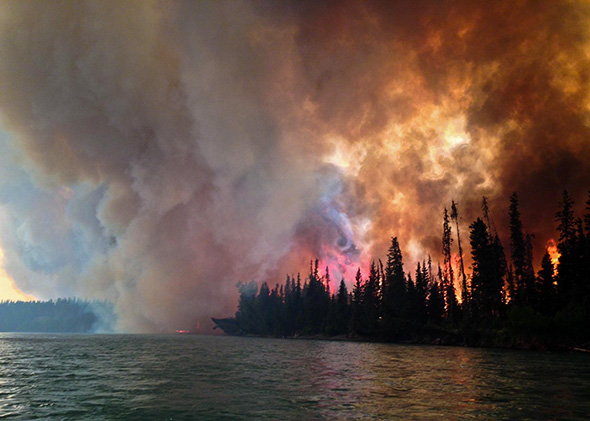Warming's recipe for Baked Alaska: trillions of tons of glaciers gone, millions acres burned
ANCHORAGE, Alaska (AP) Global warming is carving measurable changes into Alaska, and President Barack Obama is about to see it.
![]() By SETH BORENSTEIN and DAN JOLING, Associated Press
By SETH BORENSTEIN and DAN JOLING, Associated Press
Obama leaves Monday for a three-day visit to the 49th state in which he will speak at a State Department climate change conference and become the first president to visit the Alaska Arctic. There, and in the sub-Arctic part of the state, he will see the damage caused by warming damage that has been evident to scientists for years.
More than 3.5 trillion tons of water have melted off of Alaska's glaciers since 1959, when Alaska first became a state, studies show enough to fill more than 1 billion Olympic-sized pools .
So far this year, more than 5.1 million acres in Alaska an area the size of Connecticut and Rhode Island combined have burned in wildfires. In the first 10 years of statehood, Alaska averaged barely a quarter million acres of wildfires yearly. The last 10 years have averaged 1.2 million acres.
"The state is changing and changing rapidly," said Fran Ulmer, chairwoman of the U.S. Arctic Research Commission and Alaska's former lieutenant governor.
And scientists say those things are happening at least partly and probably mostly because of another thing they can measure: Alaska's temperature. Alaska's yearly average temperature has jumped 3.3 degrees since 1959 and the winter average has spiked 5 degrees since statehood, according to federal records. Last year was the hottest on record and so far this year Alaska is a full degree warmer than last year.
Alaska "is sort of a bellwether," said John Walsh, chief scientist of the International Arctic Research Center at the University of Alaska Fairbanks. "The changes are definitely happening and we're out in front of the rest of the country."
And what happens in Alaska isn't staying in Alaska, because weather changes in the Arctic trigger changes in the jet stream and reverberate down south, including the dreaded polar vortex escape that has brought sub-freezing temperatures to great expanses of North American in recent winters, said Martin Jeffries, an Arctic scientist for the U.S. Office of Naval Research.
 Warming's effects seem to be speeding up. From 1959 to 1993, Alaska's glaciers lost 57 billion tons of ice a year, but that jumped to almost 83 billion tons a year since 1994, according to Anthony Arendt, who co-authored a study on the subject this July.
Warming's effects seem to be speeding up. From 1959 to 1993, Alaska's glaciers lost 57 billion tons of ice a year, but that jumped to almost 83 billion tons a year since 1994, according to Anthony Arendt, who co-authored a study on the subject this July.
Fire burns at the Funny River area in a Kenai-Kodiak Area forest on May 25, 2014. [Courtesy of U.S. Forest Service ]
And while there may be many factors involved in glacier melt, all but about five of Alaska's 25,000 glaciers are shrinking, said University of Alaska Fairbanks glacier expert Regine Hock. She's adamant: "That's related to climate change."
This article is also being discussed in the Main Forum. You can leave a comment here, or join the discussion in the main forum by going to THIS LINK .











